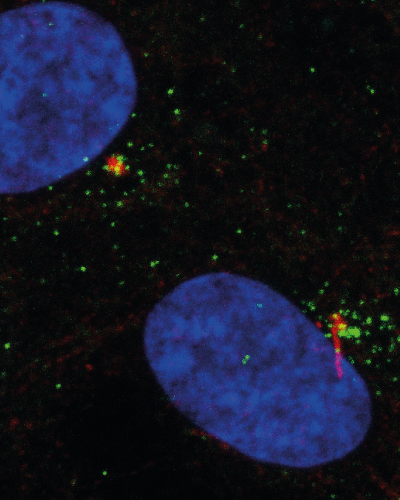
Centrioles serve as the essential building blocks of two intriguing cell compartments: the centrosome and the primary cilium. Centrosomes organise a dynamic network of tracks responsible for transporting cargo around the cell and for the equal partitioning of chromosomes during cell division. By contrast, cilia are antenna-like structures on the cell surface that sense a variety of mechanical and chemical signals from the cell's environment. Both organelles are made up of hundreds of proteins, and their structure and function are frequently perturbed in cancers.
Centriolar satellites were discovered over half a century ago; these membraneless granules surround centrioles in a pattern reminiscent of satellites in orbit, although they do not actually circulate. Despite their prevalence in cells, what constitutes centriolar satellites has remained poorly understood.
A recent study by Dr Fanni Gergely's group and their collaborators at the CRUK Cambridge Institute has uncovered the molecular composition of centriolar satellites. By capturing and purifying satellites, they were able to identify over 200 proteins within them. To their surprise, 80 of these corresponded to previously identified centrosome components. The very same set of centrosomal proteins was also found in centriolar satellites captured from cells that lack centrioles, suggesting that centriolar satellites form independently of centrosomes. Although satellite-associated centrosomal proteins could come useful in cells where protein production is limited due to rapid cell cycles or stress, they also have the potential to hamper normal centrosome and cilia function under pathological conditions like cancer.















